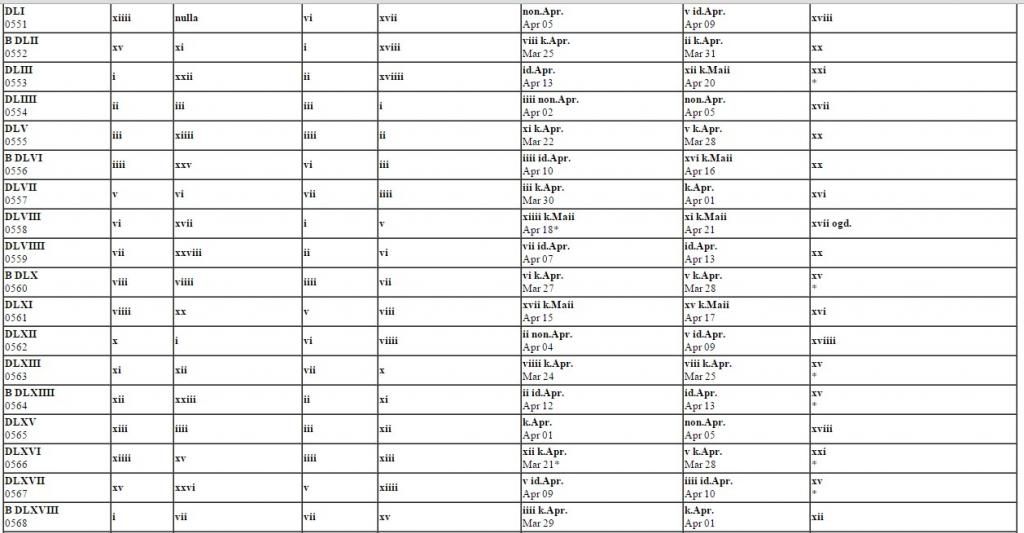Dr. G. Nosovsky:
The historians are supposed to concern themselves with chronology. However, without a sufficient mathematical education – and in the case of chronological studies, sufficient means fundamental – the historians are forced to evade the solution and even the discussion of the rather complex chronological issues.
Every historical oddness and contradiction becomes carefully concealed from the public attention; in dangerous and slippery places the historians put on a “professional” mien, saying that “everything is really okay” and they shall “give you a full explanation” later on.
Biblical scholars need to be reminded of this...
Here we have the most direct, comprehensive, and splendid proof that our official chronology of history was absolutely falsified during the Renaissance:
Dionysius Exiguus, On Easter (translation from Latin to English):
 http://www.ccel.org/ccel/pearse/morefathers/files/dionysius_exiguus_easter_01.htmExiguus assigns the date of March 24, year 563 AD, for the Paschal Moon.However, in the year 563 AD, the Paschal Moon fell on March 25.
http://www.ccel.org/ccel/pearse/morefathers/files/dionysius_exiguus_easter_01.htmExiguus assigns the date of March 24, year 563 AD, for the Paschal Moon.However, in the year 563 AD, the Paschal Moon fell on March 25. http://www.staff.science.uu.nl/~gent0113/easter/easter_text4a.htm
http://www.staff.science.uu.nl/~gent0113/easter/easter_text4a.htmDr. G. Nosovsky:
We don’t have to observe the sky or perform astronomical calculations every time; compiling a table of March and April full moons for any given period of 19 years should suffice for further reference. The reason is that the phases of the moon recur every 19 years in the Julian calendar, and the recurrence cycle remains unaltered for centuries on end – that is, if the full moon fell on the 25th March any given year, it shall occur on the 25th of March in 19 years, in 38 (19 x 2) years, etc.
The malfunctions in the cycle shall begin after 300 years, which is to say that if we cover 300 years in 19-year cycles, the full moon shall gradually begin to migrate to its neighbouring location in the calendar. The same applies to new moons and all the other phases of the moon.
http://www.theflatearthsociety.org/forum/index.php?topic=52083.0#.VRVdovysWCoBut Exiguus could not have been unaware of the date of Passover in the the almost contemporary year 563! To that end it was sufficient to apply the Metonian cycle to the coming 30-40 years; the inaccuracy of the Metonian cycle does not show up for such intervals. As he specially worked with the calendar situation of almost contemporary year 563 and as he based his calculation of the era "since the birth of Christ" on this situation, Dionysius could not help seeing that, first, the calendar situation in the year 563 did not conform to the Gospels' description and, second, that the coincidence of Easter with Passover in 563 contradicts the essence of the determination of Easter the Easter Book is based on.
Therefore, it appears absolutely incredible that the calculations of the First Easter and of the Birth of Christ had been carried out in the 6th century on the basis of the calendar situation of the year 563. It was shown in Sec. 1 that the Easter Book, used by Dionysius, had not been compiled before the 8th century and had been canonized only at the end of the 9th century. Therefore, the calculations carried out by (or ascribed to) Dionysius the Little had not been carried out before the lOth century.



